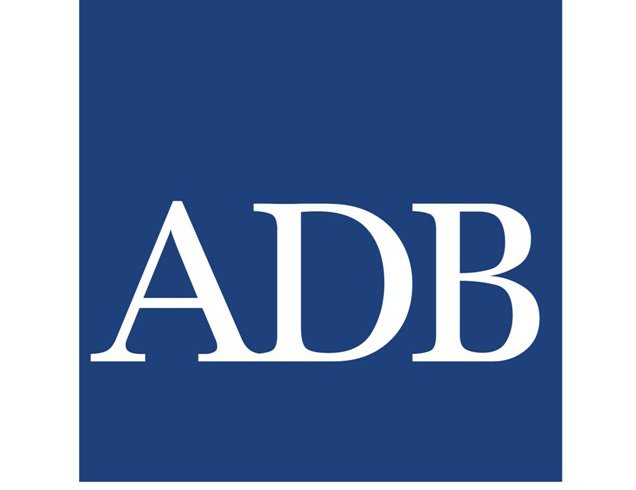
Asian Development Bank predicts that Nepal’s GDP growth will likely moderate to 5.3% in FY2020 largely owing to the global outbreak of COVID-19 pandemic. Nepal’s economy grew to an estimated 7.1% in FY2019.
The economy may rebound to 6.4% in FY2021 with the resurgence of economic activities post-COVID. Inflation rose to 4.6% in FY2019 and will inch up to 6.0% in FY2020 and stay moderate at 5.5% in FY2021.
According to Macroeconomic Update 2020, this edition provides a detailed analysis of the economic impact of COVID-19 on the economy. It also sheds light on intraregional trade investment in South Asia with a focus on Nepal.
“Intraregional trade has hovered at slightly above 5.0% of South Asia’s total trade, while intraregional FDI is mere 1.1% of total outward FDI in South Asia. Nepal’s prospects of attracting more FDI from within the region are also discussed particularly in the context of greater domestic political stability and recently enacted legal reforms, “said Macroeconomic Up2020.
GDP growth will likely moderate to 5.3% in FY2020, down from 7.1% a year earlier. The slower growth centers on several key factors, notably the global outbreak of novel coronavirus disease, also known as COVID-19. The outbreak of this disease and subsequent nationwide lockdown imposed from 24 March to 7 April 2020 have hit industry and services hard.
Remittances in the last quarter of this fiscal year will be adversely affected by this pandemic reflecting travel restrictions to contain the contagion and weaker demand in destination countries. Growth will also be dampened by lower agricultural yield, in particular of rice, which supplies nearly 7% of GDP.
Late monsoon, floods in early July and pest infestation in some farmlands crimped rice production. Industrial output will rise more slowly owing to supply disruptions reflecting the lockdown and reduced domestic demand. Services growth will wane this fiscal year with a significant slowdown in tourists’ arrival. 6. Average annual inflation will inch up to 6.0% in FY2020, up from 4.6% a year earlier. Headline inflation has averaged 6.5% in the first seven months of FY2020, significantly higher than 4.2% in the year earlier period.
Food inflation increased by 9.8% y-o-y as of mid-February 2020 with significant increase in the prices of vegetables, spices and alcoholic beverages. Food prices elevated owing to late monsoon and disruption in supply channel. The temporary closure of international borders over COVID-19 concern has already nudged up food prices. The average annual inflation in FY2020 could be higher viii Macroeconomic Update than the anticipated 6.0% if the situation further worsens due to COVID-19 pandemic.
GDP growth at 6.4% is envisaged for FY2021, assuming a quick end of COVID-19 pandemic, swift recovery from this disease and a normal monsoon. A couple of large infrastructure projects, namely Upper Tamakoshi Hydroelectric of 456 MW and Gautam Buddha International Airport are most likely to be commercially operated in FY2021. Expectation of higher sub-national level spending will also stimulate growth.
Average annual inflation will stay moderate at 5.5% in FY2021, assuming a reversal to normal activities after the COVID-19 disruption, a better harvest, subdued oil prices and a modest uptick of inflation in India. The viii Macroeconomic Update current account deficit is expected to widen from 5.0% of GDP in FY2020 to 5.6% as imports of capital goods increase. The deficit will however be largely contained by lower oil prices, a gradual reduction in the import of fossil fuel with better electricity supply, and higher hydroelectricity exports to India. 10. Downside risks to the outlook in FY2021 are the pervasiveness of COVID-19 pandemic that could paralyze the economy if the disease persists for long. Natural hazards like erratic monsoons and floods could depress farm output and damage infrastructure.
Persistent capacity deficiencies regarding project and program execution at the provincial and local levels will weaken sub-national spending. Exogenous shocks such as COVID-19 pandemic will weaken global demand, affecting out-migration for foreign employment and putting pressure on Nepal’s external stability. 11. This edition of Macroeconomic Update sheds light on intraregional trade and investment in South Asia with a focus on Nepal. Intraregional trade and investment in South Asia have been historically low. Intraregional trade has hovered at slightly above 5.0% of South Asia’s total trade, below its true potential. Intraregional FDI is mere 1.1% of total outward FDI in South Asia. Even with zero tariff rates, cross-border trade in South Asia is not hassle-free. Traders and investors are faced with bureaucratic inefficiencies related to several documentation, customs protocol, and highly restrictive visa regulations, among others. This chapter discusses Nepal’s prospects of attracting more FDI from within the region particularly in the context of greater domestic political stability and recently enacted legal reforms. The chapter concludes with policy recommendations for furthering intraregional investment in South Asia.
- Three-Day Global Science-Policy Forum: Socially Inclusive Solar Irrigation Systems Concluded
- Apr 26, 2024
- Nepal And China Ink Two Agreements , PM Prachanda Meets Chinese Delegation
- Apr 26, 2024
- Nepal Army Held National Cyber Security Symposium
- Apr 26, 2024
- Nepal’s Investment Landscape Revitalize By Nine Ordinances: FNCCI President Dhakal
- Apr 26, 2024
- Weather Forecast: Partly Cloudy In Hilly region And Mainly Fair In Plain Areas
- Apr 26, 2024
















